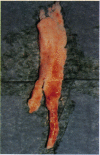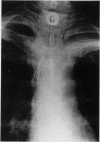Abstract
A lifelong non-smoker who was the victim of a massive accidental exposure to anhydrous ammonia gas was followed up for 10 years. In the acute phase the patient presented with severe tracheobronchitis and respiratory failure, caused by very severe burns of the respiratory mucosa. After some improvement he was left with severe and fixed airways obstruction. Isotope studies of mucociliary clearance, computed tomography, and bronchography showed mild bronchiectasis. It is concluded that acute exposure to high concentrations of ammonia may lead to acute respiratory injury but also to long term impairment of respiratory function.
Full text
PDF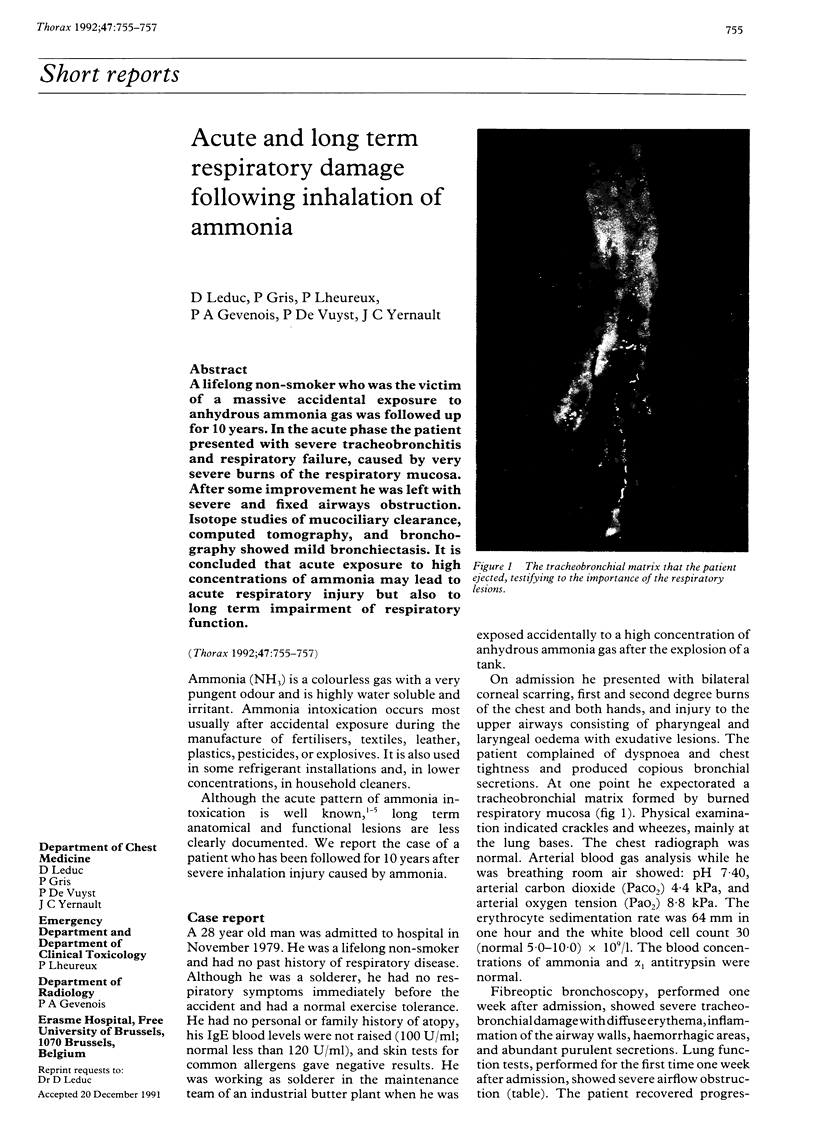
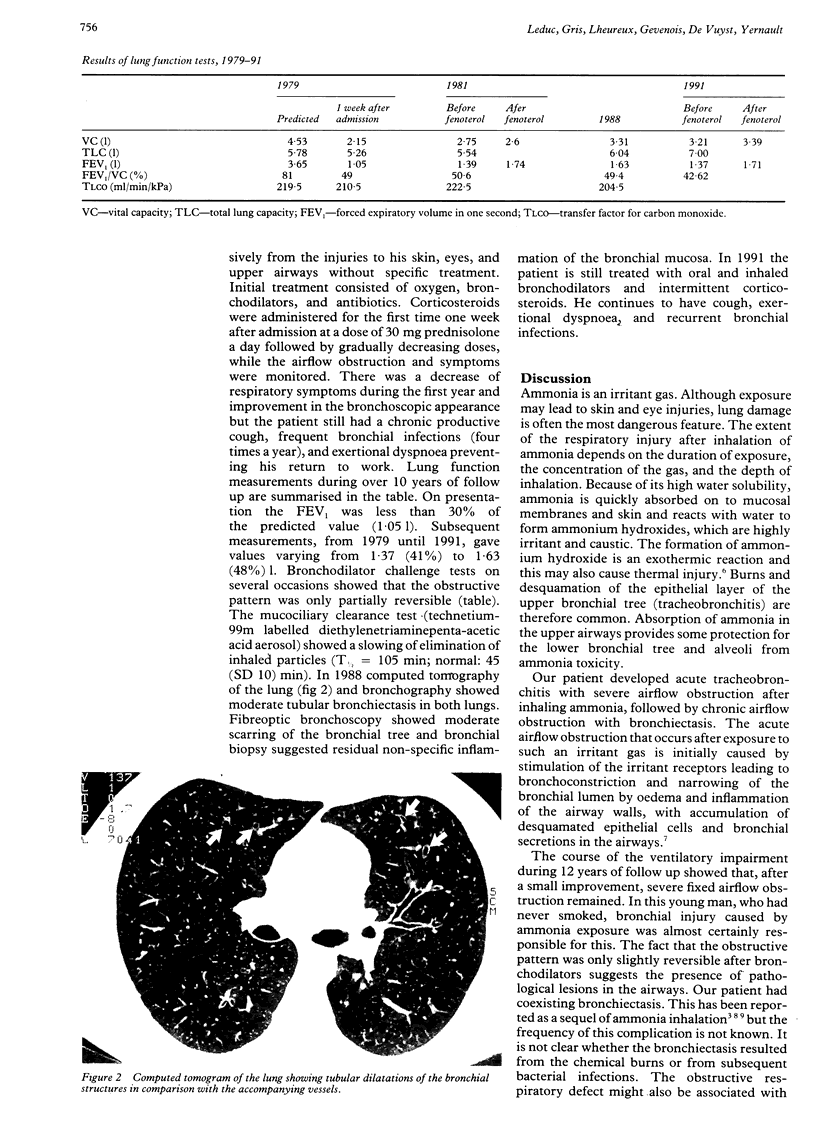
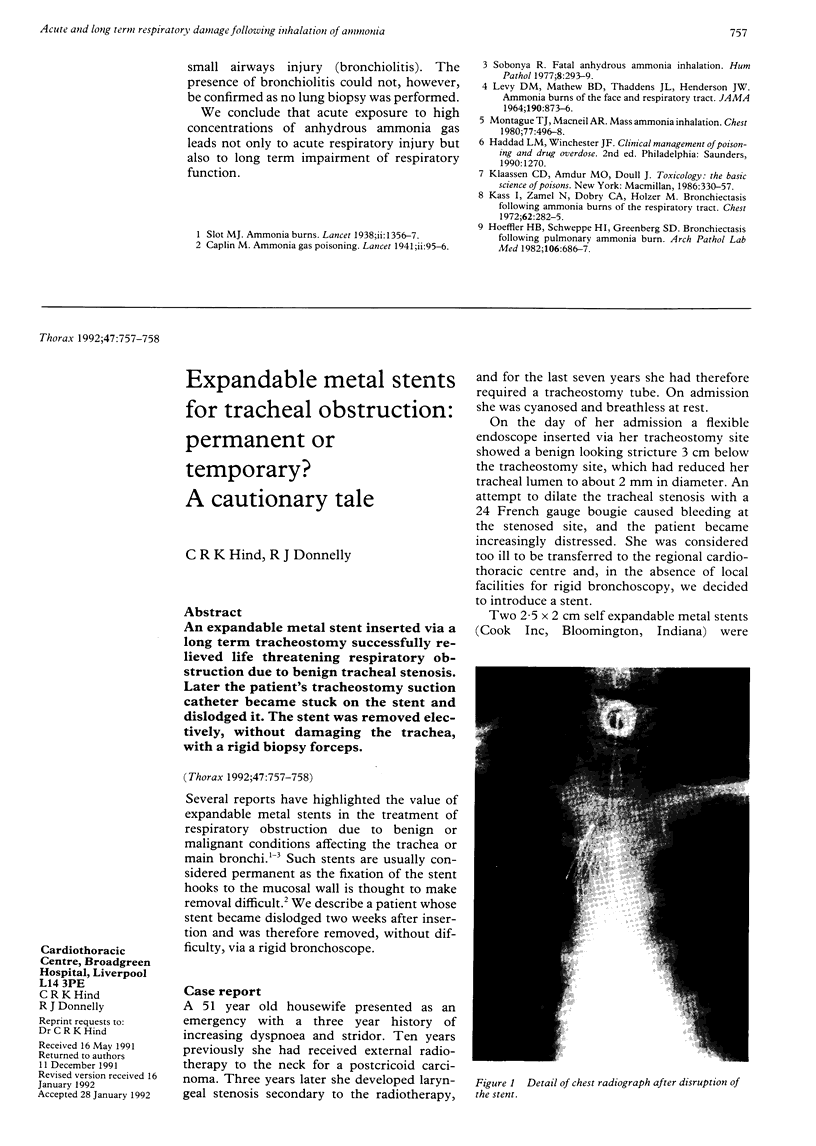
Images in this article
Selected References
These references are in PubMed. This may not be the complete list of references from this article.
- Hoeffler H. B., Schweppe H. I., Greenberg S. D. Bronchiectasis following pulmonary ammonia burn. Arch Pathol Lab Med. 1982 Dec;106(13):686–687. [PubMed] [Google Scholar]
- LEVY D. M., DIVERTIE M. B., LITZOW T. J., HENDERSON J. W. AMMONIA BURNS OF THE FACE AND RESPIRATORY TRACT. JAMA. 1964 Dec 7;190:873–876. doi: 10.1001/jama.1964.03070230009002. [DOI] [PubMed] [Google Scholar]
- Montague T. J., Macneil A. R. Mass ammonia inhalation. Chest. 1980 Apr;77(4):496–498. doi: 10.1378/chest.77.4.496. [DOI] [PubMed] [Google Scholar]
- Sobonya R. Fatal anhydrous ammonia inhalation. Hum Pathol. 1977 May;8(3):293–299. doi: 10.1016/s0046-8177(77)80026-9. [DOI] [PubMed] [Google Scholar]



